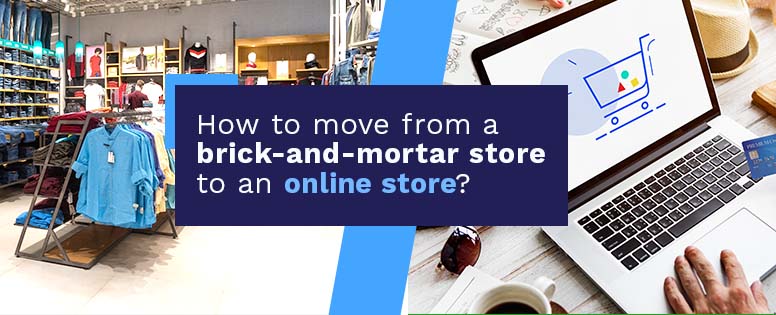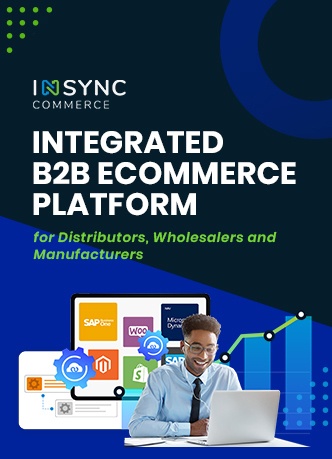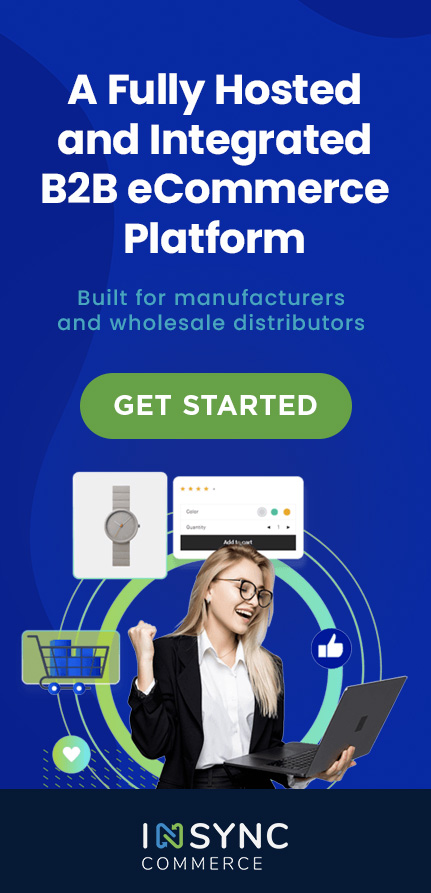
With how quickly the world is changing every day, the need for businesses to evolve and adapt is greater than ever. Recognizing emerging trends and adapting tools and strategies to capitalize on these trends is the key to long-term business success.
Businesses that still depend on a physical brick-and-mortar store drastically fall behind the competition in today’s digital era. For organizations that still solely rely on a physical store to carry out business, it is high time they adopted an online platform to run their business to survive in this new digital age.
What is a brick-and-mortar store, and how does it differ from an online store?
Brick-and-mortar stores are the oldest form of business that has existed throughout the history of civilization. They are the traditional street-side businesses that conduct their operations face-to-face with the customer in an office or store that the company owns.
The most obvious difference between a physical store and a digital store is that the online store is not limited by physical space. Without the physical limitation of space, an online store can grow and scale in parallel to a growing business effortlessly.
Another difference is the limitation of customer reach for a physical store. Through the global reach of the internet, an online store can sell to customers across the globe. An online store can also work around the clock, allowing the business to interact with a customer from any time zone.
Marketing is also another place where an online store has a distinctly different approach when compared to a physical store. Brick-and-mortar stores are usually limited to the scope of traditional means of marketing such as television and radio commercials, newspapers, and billboards. Online stores can get a more effective and impactful reach through social media and digital advertising.
So, we can see that there are several differences and advantages that an online store has over a traditional physical store. These disadvantages are not the only challenges that a physical store has to face. With the rise of the COVID-19 pandemic and the accessibility a customer enjoys when making purchases through mobile apps, businesses still operating solely through a traditional physical store are fighting an unwinnable uphill battle.
Want to eliminate your eCommerce challenges and gain excellence in your business? Employ our robust B2B eCommerce Platform that helps you transform your eCommerce game. Get started with your B2B eCommerce store and gain a competitive edge in the market!
The challenges faced by brick-and-mortar stores
With the growth of the internet reaching the always available handheld smartphones, online stores have taken the largest share of customers within the market. The changing trends within the industry have led to new emerging challenges that the traditional physical stores were not facing even a few years ago. The complexity of these challenges has become even more unsurmountable with the global socio-economic disruption brought in by the COVID-19 pandemic.
Considering all of these, the traditional stores are currently facing these challenges within the industry:
Limited product inventory
While large-scale retailers have the resources to create a large enough physical store to house an extensive inventory of products, most brick-and-mortar stores do not have the necessary infrastructure to hold such a diverse and large volume of goods. The limited quantity and variety of products cause a fundamental issue where the customer prefers a product, but the desired color or size is not available. In such a case, the merchant loses both customers and wastes inventory space on a product that is not in demand.
Lack of real-time updates to customers
With the disruption of global supply chains due to the COVID-19 pandemic, managing logistics and accurately predicting lead times for deliveries are not possible for physical stores. Occurrences can happen where the customer may have to make repeated visits to the store to get their delivery. A solely physical store must resort to the customer making regular calls or visits to the store to get updates on their shipping. The inconvenience of this can lead to the customer opting for other vendors that can provide easy real-time delivery updates.
Absence of customer behavior data
Traditional physical stores do not have any tools to track and monitor customer purchasing behavior effectively. When a customer visits an online store, a digital footprint for the products reviewed and the sites visited is left behind. This data can later be utilized by businesses to optimize their marketing strategies and better target relevant customers. Traditional stores do not have these tools to optimize their marketing strategies.
Operational overhead
There are several costs associated with a physical store that an online store must bear. A physical store undergoes expenses just for existing. For setting up stores within a mall, the store owner gets charged on a per-square-foot basis, and the price can get very steep based on location popularity. Moreover, a lease must be signed by the store owner, which is usually for a period of four to five years. The lease legally binds the merchant to pay the rent to the owner even if the business fails. On the other hand, establishing a store from the ground up is also extremely expensive and time-consuming. Online stores do not have these restrictions. Most online stores are subscription-based, and some even allow the seller to start the store for free with limited features or for a limited time.
Poor product visibility
No matter how large a showroom may be, it is impossible to have the entire inventory on display. Customers may come into a store and not find their desired item on display and assume the store does not have it stock and leave, despite the seller having it in inventory. Through an online store, a customer can effortlessly look up the entire inventory of a seller, check for the exact model, size, and color of a product they are looking for, and when an out-of-stock item will be back in inventory. A physical brick-and-mortar store cannot offer such a level of transparency to its customers.
Lack of around the clock accessibility
With the lockdowns kicking in with the rise of the pandemic, visiting physical stores is a strenuous prospect for most customers. With the growing shift for merchants to sell online through mobile apps, customers now have access to the store twenty-four hours a day, seven days a week. The accessibility and convenience provided by an app-based online store can never be matched by a physical store.
All these challenges are a crippling blow to the survivability of a solely physical store owner. The implementation of an online store is critical for these stores to not only stay relevant but also to survive in this new market.
Why upgrade to an Online Store?
It is no mystery that selling online has helped several businesses earn more and grow exponentially. By moving to an online platform, merchants can tap into newer opportunities to grow and expand their business. By upgrading to an eCommerce platform, physical store owners can not only mitigate the previously stated challenges but also gain the following advantages:
A faster buying process for customers: An online store enables customers to readily look up the desired product and allows faster payments through online payment gateways.
Quicker dispute resolution: Online selling allows for faster item returns and automated refunds in case of damaged product delivery.
Reduced operational costs: The most prominent advantage a seller receives by selling online is reduced overhead costs. Several upfront expenses for rent, repairs, store design, and physical inventory storage can be circumvented by selling through an eCommerce platform.
Omnichannel opportunities: Sellers do not have to dismantle their physical store when adopting an eCommerce platform. Combining physical and online selling opens the vendor to omnichannel retail capabilities. Omnichannel selling is more flexible and convenient for consumers for making purchases and helps dramatically boost sales.
Multiple payment modes: ECommerce stores provide customers with the option to make their payments through several different payment channels. The options can include UPI, cash on delivery, card on delivery, net banking, EMIs on credit or debit cards, and even pay-later credit facilities. The flexibility for payment removes potential sales loss due to the lack of available payment modes.
With the advantages of an online store laid out, let us look into how one can get started with an eCommerce store.
Getting started with an eCommerce store
Setting up an eCommerce store is not an exceedingly challenging task, even for those who are not very technologically savvy. Here is a step-by-step guide on how to begin the journey towards a digital store.
Selecting an ideal eCommerce platform
Before starting an online store, one needs to choose the ideal eCommerce platform that best suits the needs of the business. Like a physical store, the eCommerce site will be the face of the company. It is the first point of contact for the customers, and they will use it to browse and make their purchases. Thus, the type of eCommerce platform chosen plays a critical role in the success of the business. There are several options currently available on the market. Check out our Competitive Guide on the Most Successful eCommerce Platforms here to find the platform that best suits your business.
Apply for legal licenses and permits
Several legal documentations are necessary to operate a business. With the growing eCommerce market, legal safeguards are also mandatory to protect a company from fraudulent charges. The following are the essential legal documents that an eCommerce business must have:
- Terms and Condition document
- Privacy Policy
- Cookie Policy
- Return Policy
- Warranty Policy
The above legal documents will ensure the legal protection of the business and should be prominently displayed to prevent cases of legal disputes.
Setup payment gateways
Without a payment gateway, there is no way for an online seller to receive their payments. While some eCommerce platforms provide their own payment gateway, most platforms allow users to integrate their preferred payment processing platform. Setting up the payment gateway also requires connecting the payment gateway with the merchant’s bank account to streamline payment processing.
Select order fulfillment channels
When selling through an eCommerce platform, the merchant needs to decide on a logistics solution to fulfill the delivery. Merchants opening their own eCommerce store need to implement a custom delivery solution. There are several exceptional courier services available for eCommerce shipping like Blue Dart, FedEx, and UPS. Creating an eCommerce store through Shopify also gives the users the option for dropshipping.
Create channels for customer communications
Setting up proper channels for customers to communicate with the business is essential for getting quality feedback on the product and services offered by the vendor. While integrating tried and tested communication channels like email and telephone are functional, they do not provide real-time communication. By implementing an AI-driven chatbot a business can interact with customers around the clock. The instantaneous around-the-clock communication capabilities provided by a chatbot helps increase buyer satisfaction and ensure long-term brand loyalty.
Develop a marketing strategy
Adopting an eCommerce platform opens up new channels for marketing the business. Once the eCommerce store comes online, properly advertising the store is necessary to generate awareness. A digital store is an online outlet and thus benefits the most from online marketing. Marketing channels such as Google ads, social media ads, and Search Engine Optimization (SEO) are the most common methods for digital marketing. Marketing automation tools such as Buffer and Mailchimp can also be integrated into the marketing strategy. Another step worth considering is the use of an analytics tool to monitor which marketing tactics are working and those which are not, and then optimize the strategy around it.
Implement analytics tools to track progress
An eCommerce store provides the advantage of integrating an analytics tool to track business progress. Utilizing an analytics tool is crucial to identify what strategies are working towards the growth of the business and what is not. The analytics tools can provide insight into which products are in demand, customer purchase behavior. The insight provided by the analytics tools allows businesses to plan out effective long-term businesses strategies.
INSYNC Commerce – The best end-to-end integrated B2B eCommerce platform to start your online business.
Having just an eCommerce store is not enough to run a successful online business. Several other tools are needed in collaboration with it to gain optimal results. INSYNC Commerce provides all the necessary tools right out of the box. INSYNC Commerce is a fully end-to-end integrated B2B eCommerce platform that opens up opportunities for B2C sellers to expand into the more lucrative B2B market effortlessly. The future-ready solution comes packaged with built-in integrations for other business applications and provides a seamless digital experience through a PWA (Progressive Web Applications) platform. With robust security protocols and unlimited bandwidth, products, and sales, INSYNC Commerce ensures effortless growth and scaling for your business. Check all the advantages INSYNC Commerce can provide for your business over here.
Check out this webinar to learn how a robust end-to-end integrated B2B eCommerce platform can help wholesale businesses seamlessly automate their business process and achieve long-term sustainable growth.
Conclusion
The fifth Industrial Revolution is just around the corner. The revolution will bring in an even greater emphasis on technology within the industry. The use of robotics and AI (Artificial Intelligence) to manage and optimize business will be a governing factor that will determine the success of an organization in the coming new Industrial Revolution. Thus, companies still left behind with just their traditional brick-and-mortar store need to rapidly upgrade to an online store not only to open themselves up to the coming advantages and opportunities of the fifth Industrial Revolution but also to stay relevant and survive.
Eliminate your eCommerce challenges and gain excellence in your business? Employ our robust B2B eCommerce Platform that helps you transform your eCommerce game. Get started with your B2B eCommerce store and gain a competitive edge in the market!











